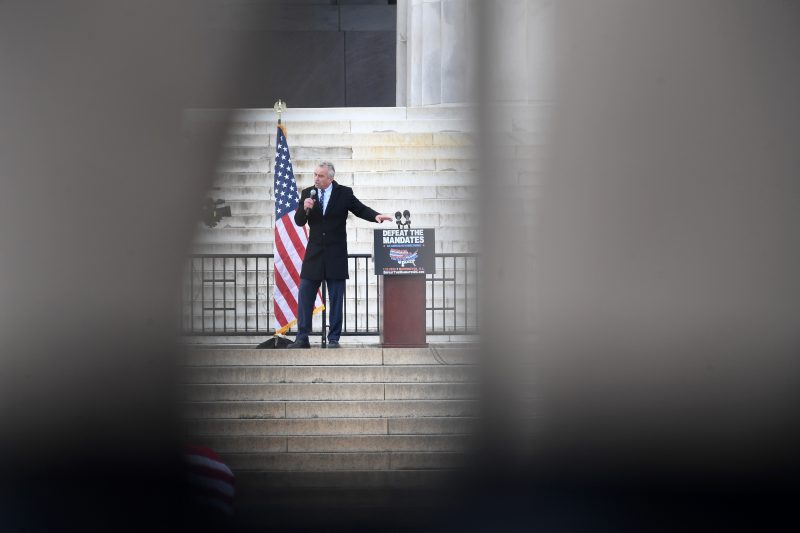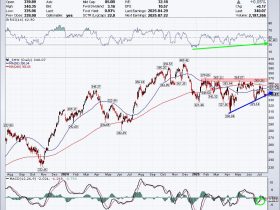When you are a fringe challenger to an incumbent president, you take good news where you can get it. So, following the release of new poll numbers from YouGov on Wednesday, Robert F. Kennedy Jr. hyped an article emphasizing his relatively strong favorability ratings.
Favorability ratings, though, are tricky things. They are useful measures of how voters feel about candidates, ones that often correlate to voting intention. But they’re also necessarily hindered by an important caveat: Particularly for lesser-known candidates, popularity is easy to overstate.
For better-known candidates, there’s another important consideration: how those numbers are changing over time.
Let’s use favorability ratings released by Quinnipiac University on Wednesday to show how this works. If we simply consider the percent of respondents who view each of the identified presidential contenders favorably, we get these results (with candidates listed in alphabetical order).
President Biden is first, followed by Donald Trump and Florida Gov. Ron DeSantis. Kennedy is fourth.
But a lot fewer people have an opinion about Kennedy than Biden, Trump or DeSantis. That’s made more obvious if we scale each circle to the percent of respondents who had an opinion about the candidates. For Biden, it’s 98 percent. For Kennedy, it’s 58 percent.
This allows us to calculate an adjusted favorability rating — the percent of respondents with an opinion who view the candidate favorably. So 57 percent of respondents have an opinion of Kennedy and 31 percent view him favorably, meaning that 54 percent of those with an opinion view him favorably.
On this metric, he’s the most favorably viewed candidate.
If we use another adjusted metric — net favorability, or the percent who view a candidate favorably minus those who view the candidate unfavorably — the pattern that results is similar.
But notice how this advantages the particularly poorly known candidates, such as radio host Larry Elder. Only 30 percent of respondents have an opinion of him, and half of those view him favorably. Suddenly, his adjusted favorability is about the same as Kennedy’s. Perhaps he should hype it on social media.
For Kennedy in particular, though, there’s a very important additional bit of context. If we look at the adjusted favorability just within each candidate’s party — the group that will be most important in selecting the party’s nominee — we see that Kennedy is suddenly among the worst-performing candidates.
Among the opposing party, though, Kennedy does unusually well. That’s the driver of his “popularity” in a nutshell: Republicans like him a lot, in part because he shares many of their central policy approaches and in part because he’s polling in the double digits against the incumbent president they hate.
If we compare adjusted favorability within a candidate’s party to adjusted favorability with the opposition, Kennedy is an obvious outlier.
The second-most interesting candidate on that chart, though, is former New Jersey governor Chris Christie. See how his circle sits right on the diagonal line? That’s because his favorability rating with Republicans is exactly the same as his favorability with Democrats. That would be useful if 1) he were running in a general election, not a primary; and 2) the shared rating were a lot higher.
For Kennedy, there’s another consideration, of course. Some hard-to-measure portion of his favorability stems solely from his last name. Some part of the responses for every candidate includes people who are just evaluating favorability based on vibes; I find it hard to believe, for example, that 1 in 10 Americans has a firm opinion on North Dakota Gov. Doug Burgum. If you are a Democrat who doesn’t know about Robert Kennedy Jr. but you hear the name “Kennedy,” you might say you view him favorably based solely on the brand.
Often, as people learn more about candidates, their favorable views slip. Generic unnamed candidates almost always do better in polls; the more that candidates talk about their positions, the more likely it is that you’ll discover you disagree with them. And that’s even setting aside attacks from their opponents.
This is the caveat that should be applied to DeSantis’s numbers above. Yes, he’s faring well with Republicans. But over the past seven months, his favorability has slipped.
If we look just at the actual favorable and unfavorable ratings in Quinnipiac’s polling since November, we see that his unfavorable ratings have surged while his favorable ratings have fallen. If we adjust those numbers, the pattern becomes sharper: unfavorability rising and favorability falling, even as the segment of respondents who haven’t formed an opinion has dropped from 36 to 18 percent.
This decline is largely a function of erosion among Republicans — driven in part by incessant and hostile attacks from Trump. Since Quinnipiac’s last poll, that drop has been very sharp, suggesting that perhaps this poll is an outlier, a statistical glitch in an existing pattern. But it’s also very possible that the previous poll was the outlier; the trend in the past five polls has been steadily downward, save that May survey.
That prior survey was released just as DeSantis was launching his campaign, though the launch itself followed the period when respondents were being contacted. DeSantis’s launch, though, didn’t have much of a positive effect on his campaign.
Again, presidential candidates make the best of what they’ve got. For Kennedy, it’s polls that show him with generally favorable views early in a contest where he’s not likely to take much fire from his main opponent. It’s also because he holds an appeal among Republicans that he lacks with Democrats.
But the context for DeSantis’s numbers is even worse, trending in exactly the wrong way. At a glance, that’s hard to spot — a good example of why favorability ratings are important not to simply take at face value.








